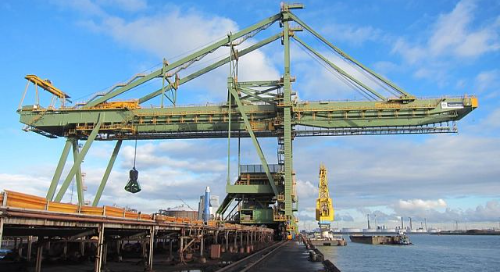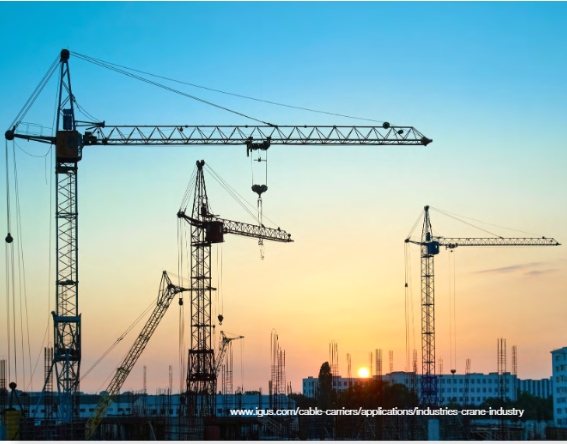Jib crane cable management: What’s the best solution?
When it comes to industrial machinery, there are machines that often go unnoticed but play pivotal roles in enhancing efficiency and productivity. Among these products is the jib crane—a versatile lifting apparatus that has revolutionized material handling across various sectors. From manufacturing plants to construction sites, jib cranes have become indispensable tools, streamlining processes and ensuring safety. In this blog, we delve into the fundamentals of jib cranes, exploring their functionality, applications, and the intricate cable management systems that power their operations.
What is a jib crane?
A jib crane is a type of crane that utilizes a horizontal arm, known as a jib or boom, which is mounted to a vertical mast or pillar. This design enables the crane to rotate horizontally, providing a wide range of motion for lifting and moving loads within a specific radius. Jib cranes come in various configurations, including wall-mounted, floor-mounted, and ceiling-mounted, each tailored to suit different spatial constraints and operational requirements.
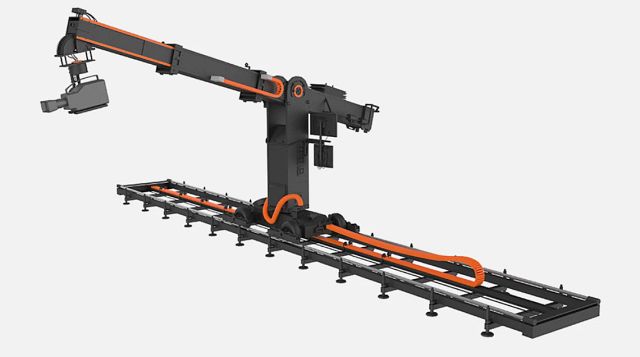
Related: Jib Cranes: What Is It? Types of, Components, Uses (iqsdirectory.com)
Cable management systems
Central to the functionality of jib cranes are their cable management systems, which ensure the safe and efficient operation of the crane. These systems encompass various components designed to manage cables and hoses, including:
Cable Festoons: Cable festoons are systems of cables and hoses arranged in loops, suspended from the jib crane's boom. They provide a flexible pathway for power supply, control signals, and pneumatic/hydraulic lines.
Cable Reels: Spring-loaded cable reels are commonly employed to retract and store cables when the jib crane is not in use. These reels maintain tension on the cables, preventing slack and minimizing the risk of entanglement or damage.
Cable Carriers: Cable carriers, also known as energy chains or drag chains, are utilized to guide and protect cables and hoses along the jib crane's moving parts. These carriers come in various designs, including enclosed or open styles, and are selected based on factors such as load capacity, speed, and environmental conditions.
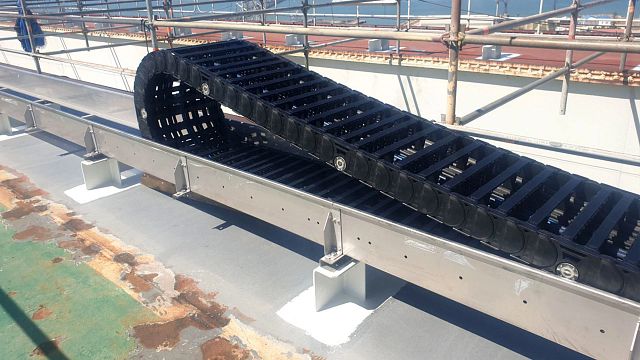
Jib cranes transport workpieces of all kinds to loading ramps, processing machines or assembly stations. However, failures can always occur — for example, when hanging energy and data cables are damaged by a forklift during workpiece unloading. This leads to extensive downtime, unplanned repair costs and production delays. This fundamental cable management flaw can be easily solved, however, thanks to specially designed cable carrier systems.
Alternatives to cable festoons for jib cranes
Cable festoon systems are a leading cable management solution for jib cranes. However, cable festoons not only come with the risk of cable damage as mentioned above, but other disadvantages as well. The biggest among these is the significantly higher amount of cable needed relative to travel distance — about 50% more than an equivalent energy chain system. However, energy chain systems can also achieve travel speeds over twice as fast as those of comparable festoon systems.
The most common way to install energy chain cable management on a jib crane is to utilize the flange of the jib as a space for a guide trough. This minimizes installation space, and the cable carrier itself is virtually maintenance-free, unlike festoons which require frequent maintenance to perform optimally.
igus® offers an alternative to guide troughs that still allows cable carriers to be installed in a space-saving manner — the guidelok swing GLO.S. This solution is installed in the same location as a guide trough, but individual rocker elements are installed along the jib that serve to hold the cable carrier in place as it moves.
This is a much simpler system than even a guide trough, reducing costs and still ensuring a low wear rate and long service life. Additionally, the guidelok swing allows for more space between the crane jib and energy chain (8–19mm), allowing for larger bend radii. Like all igus products, the guidelok swing has been extensively tested in our 41,000-square-foot test lab in Cologne, Germany to provide the best possible performance.
If you’ve previously installed energy chains and need to replace them to make the switch to the guidelok, consider the igus chainge recycling program. Through this program, you can have previously used chains recycled and receive a voucher to use for future cable carrier purchases.
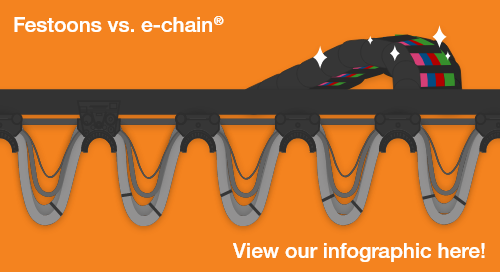
Some companies are already implementing the guidelok swing and seeing improvements not only in performance and reliability, but safety as well. SEW-Eurodrive, a German drive technology manufacturer, has equipped an indoor crane at their South African plant with the guidelok swing. By making this switch, the company was able to reduce the risk of accidents while still increasing the crane’s overall reliability.
Applications across industries
The versatility of jib cranes lends them to a myriad of applications across diverse industries:
Manufacturing: In manufacturing facilities, jib cranes are instrumental in lifting heavy machinery parts, transporting materials between workstations, and loading/unloading goods from trucks or storage areas.
Construction: On construction sites, jib cranes facilitate the vertical movement of construction materials, such as steel beams, concrete panels, and equipment, aiding in the erection of structures with precision and speed.
Warehousing and Logistics: Within warehouses and distribution centers, jib cranes are utilized for pallet handling, stock replenishment, and order fulfillment, optimizing the storage and retrieval processes.
Shipbuilding and Ports: In maritime industries, jib cranes play vital roles in shipbuilding yards and ports, assisting in the assembly of ship components and loading/unloading cargo on vessels.
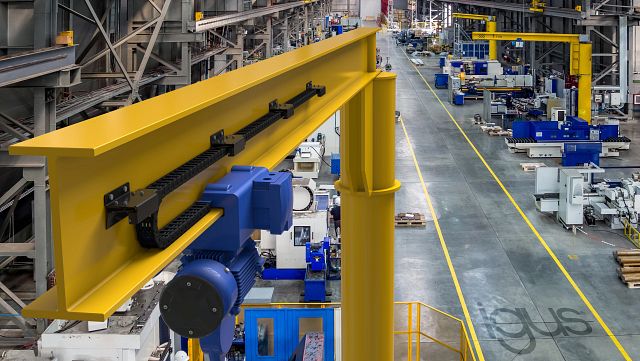
Related: Port cranes: Functions, types and sizes
Automotive: Automotive manufacturing plants employ jib cranes for the installation of vehicle components, engine blocks, and chassis, facilitating seamless assembly line operations.
Conclusion
Jib cranes stand out in the world of industrial machinery as indispensable tools for lifting, maneuvering, and positioning heavy loads with precision and efficiency. From their diverse applications across industries to the intricate cable management systems that support their operations, jib cranes exemplify the fusion of innovation and practicality in modern engineering. As industries continue to evolve, the role of jib cranes remains pivotal, driving progress and unlocking new frontiers in material handling technology.


